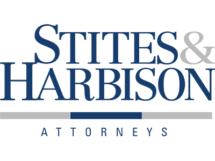From March 20-23
FRANKFORT, Ky. (March 14, 2017) — The Kentucky Labor Cabinet will host free OSHA training in Lexington from March 20-23 at the Clarion Hotel. The week-long workplace safety seminar is a part of the Labor Cabinet’s Population Center Training series which are held in various cities across the state throughout the year.
Population Center Training courses are for both employers and employees and are typically given over a one-week period at each location. The courses are designed to outline the requirements contained in the various subparts of the General Industry and Construction Standards, covering both safety and health issues. All classes are free of charge and open to the public.
March 20
- Overview of the Kentucky OSH Program 8:30-11:30 a.m. — Discusses the obligation to employers to provide a safe and healthy workplace, free from recognized hazards. Topics of discussion include the operations of the Kentucky Occupational Safety and Health program, including enforcement and voluntary compliance services, and safety and health topics currently being considered for future standards and policies.
- Permit Required Confined Space 1-4 p.m. — Explains the regulations regarding entry into and working in confined spaces. Topics include confined spaces found in the workplace and the hazards associated with them, the regulatory impact of the 1910.146 standard, developing a written program, training employees, permit systems, rescue, and employee participation.
March 21
- Injury and Illness Recordkeeping 8 a.m. to noon — For those persons responsible for maintaining the revised injury and illness records. The forms 300, 301, 300A will be covered. The regulations and guidelines for recordkeeping will be discussed, as well as the compliance directive the Kentucky OSH compliance officer will use to evaluate records. Time permitting, a recordkeeping example workshop will also be part of the course. (CEUs available for this class from OSHA OTI)
- Bloodborne Pathogens 1-4 p.m. — Explains the measures that must be implemented to protect employees from the hazards of occupational exposure to blood and other potentially infectious materials containing bloodborne pathogens, such as hepatitis B virus, and human immunodeficiency virus. Topics of discussion include: applicable definitions; infection control; engineering and work practice controls, including universal precautions; personal protective equipment; housekeeping; medical evaluations; warning signs and labels; and, training of employees.
March 22
- Hazard Communication – GHS 8:30–11:30 a.m. — Covers the basic requirements of 29 CFR 1910.1200 and the revised provision of the standard as they relate to the Globally Harmonized System of Classification and Labeling of Chemicals (GHS). Attendees will learn about the revised standard, which will include chemical hazard classification; written program requirements; container labeling and other forms of warning; safety data sheets; and, associated phase-in dates for the new requirements under GHS.
- Welding 1-4 p.m. — Designed to increase the participant’s knowledge of the processes and hazards associated with welding operations in the construction industry. Topics include the various types of welding processes such as oxy-acetylene; TIG, MIG, and open arc; personal protective equipment; safety and health hazard recognition and control; and, Kentucky occupational safety and health requirements.
March 23
- Fire Protection and Egress 8:30–11:30 a.m. — Covers 1910, Subpart E: Exit Routes, Emergency Action Plans, and Fire Prevention Plans; and, Subpart F: Fire Protection. Participants will learn how to develop and implement effective Emergency Action and Fire Prevention Plans, as well as maintain exit routes. Additionally, classification of fires, fire extinguishment methods, fire detection systems, and employee alarm systems will be addressed.
- Basic Electrical Safety 1-4 p.m. — Covers the basic requirements surrounding the approval, installation, and use of electrical equipment and devices. The course is built around OSHA standards found in 1910.303 to .305. It includes a discussion of OSHA and industry standards as they relate to the installation of electrical equipment, commonly cited approval and installation violations, an overview of the equipment approval process, cord marking requirements, and basic hazards found in commonly made electrical wiring issues. Group-based and hands-on learning activities, including flexible cord marking designation and determining wiring issues associated with an electrical fault board, are also included.



















Add Comment